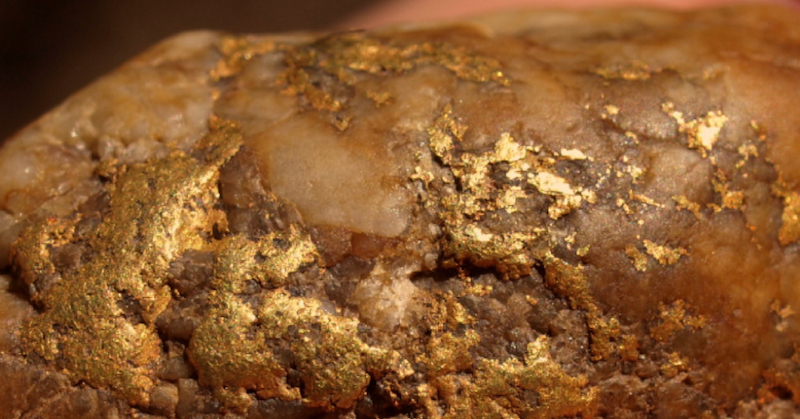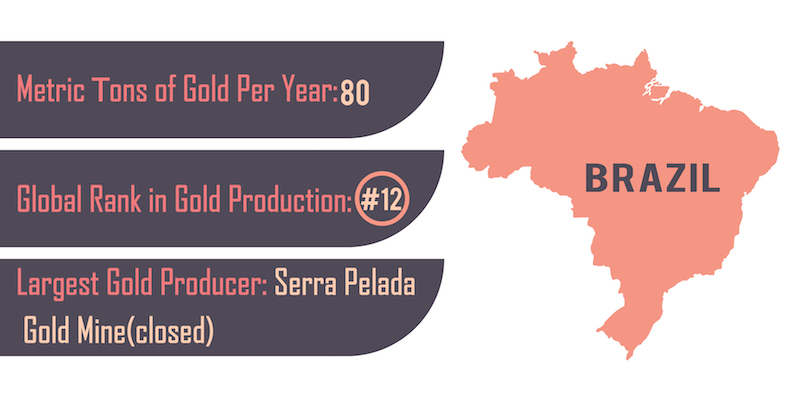
During the 16th and 17th centuries, Brazil was known to be one of the world’s most sought after territories for gold mining. It was a country which was at the forefront of the gold mining industry at this moment in time, and was a colony which formed part of the Portuguese Empire.
Hoping to increase their power within Brazil, the Portuguese government made plans to make their way into the inner regions of Brazil in order to expand their control within the South American colony.
Slavery of the Early Brazilian Mines
It was a group of Portuguese settlers known as Bandeirantes who were tasked with achieving the wishes of the Portuguese government. The Bandeirantes were adventurers who were mostly made up of first and second-generation Portuguese natives. They were in charge of capturing the indigenous people and forcing them into slavery. In the process, this allowed the Portuguese government to greatly improve their power within Brazil.
However, it soon became apparent to the Bandeirantes that the inner regions of Brazil had huge potential for mineral wealth. The Portuguese government were made aware of this, and so they decided to reward those who were able to discover gold and silver deposits and send them over to Portugal.
Even though they were originally focused on enslaving natives, the Bandeirantes soon became driven by the incentive for reward. So, they began to place heavy focus on taking full advantage of the potential for mineral wealth within the inner regions of Brazil. In the process, they had set their sights on striking it rich.

Expanding the Brazilian Goldfields
While exploring inner Brazil, the Bandeirantes came across large gold deposits in Minas Gerais – a large inland state within south-eastern Brazil. The city of Ouro Preto was one of the most prominent areas in Minas Gerais for gold mining, and it didn’t take long for the word to spread. Soon enough, this sparked the beginning of the Brazilian Gold Rush – the longest lasting gold rush in history which stretched out until the late 19th century.
Eventually, around 400,000 Portuguese and around approximately 500,000 African slaves had made their way to the gold region in order to mine the gold which had been discovered. The population within this particular area had increased so much, that by the year 1725, around half of Brazil’s population were living in south-eastern region of the country. The colonial town of Ouro Preto for example became known as one of the most densely populated cities in the New World.
Previously, those who had made their way to Ouro Preto to mine had worked on sugar plantations and lived on the northeast coast of Brazil. However, they decided to abandon the north in favor of working in the mines in the south
With Brazilian gold mining in full force in the 18th century, it was reported that around 850 tons of gold were sent to Portugal, while the rest remained within Brazil to be used for various purposes. During this period, Portugal were able to increase their wealth substantially, and in turn, they had achieved their goal of increasing their power within Brazil.
British mining company Saint John d’El Rey also operated within Brazil in the 19th and 20th centuries. Skilled miners who were predominantly from Cornwall were employed by this particular company, although British miners from other areas of Britain and black slaves were also brought in to work within gold mines in Minas Gerais.
The Modern Era of Gold Mining
Even in the 21st century, gold is still highly sought after in Brazil. This is hardly surprising considering the United States Geological Survey (USGS) found that Brazil is within the top 10 largest gold reserves in the world, and is the 11th highest producer of gold in the world. Previously, they were ranked in twelfth position. So, this just goes to show that gold mining within Brazil is on the rise.

In terms of where gold can be found in modern day Brazil, there are a variety of locations where it can be mined from. Rocks, river beds, and ancient volcanic sediments are just some of the most prominent locations where gold can be found.
The Iron Quadrangle in the south-central region of Brazil is one of the most notable areas for traditional gold mining. This includes the aforementioned Minas Gerais – the place where high amounts of gold were discovered by the Bandeirantes. However, mining within this area is now on a much smaller scale in the present day. This is because the sheer scale of mining which occurred in the area in the 18th and 19th centuries all but exhausted the gold deposits within this part of Brazil. In spite of this, gold panning still occurs to a certain extent.
The Amazon is the area which arguably holds the most gold mining potential within Brazil. However, mining in this area is somewhat difficult due to the native Brazilians who live within the Amazon, as well as various legislation which was set in place by the Brazilian government.

The Amazon isn’t the only area for modern gold mining in Brazil – there are actually a number of other locations spread throughout the country too. The state of Bahia is just one of these locations – with the Jacobina operation producing around 150,000 ounces of gold per year.
Elsewhere, the Serra Grande gold mine located in the Goias state of Brazil is a mine which is joint owned by AngloGold Ashanti and Kinross Gold Corporation. Although, the mine is actually operated by the former, with 50% off the revenue being distributed to Kinross. In the financial year of 2003, this particular gold mine was able to produce 190,000 ounces of gold. However, this fell to around 154,000 by the year 2009 – a fall of 30,000 when compared to the highest amount which was mined in the 2006 financial year.
Overall, it is safe to say that Brazil holds great importance within the realm of modern gold mining. The huge amount of gold reserves which are yet to be mined in the country show that there is huge potential for the future. So, it certainly wouldn’t be surprising to see Brazil move further up the rankings in terms of overall gold production in the coming years.
Next: Gold Mining in Peru – Latin America’s Largest Gold Producer
